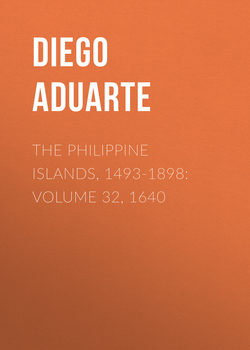Читать книгу The Philippine Islands, 1493-1898: Volume 32, 1640 - Aduarte Diego - Страница 17
Book Second of the History of the Province of the Holy Rosary
Chapter VI
The great devotion in Japon to the rosary of our Lady; the death of the emperor, and the state of the church there
Оглавление[In the beginning of the year 1616, the confraternity of our Lady of the Rosary, which had been established in 1602, when the order of our father St. Dominic entered Japon, was very greatly increased, and the devotion to the rosary became much more intense. This order and the devotion connected with it spread from Nangasaqui through all parts of Japon, and much improvement in the lives of those who devoted themselves to the rosary was perceived. Miraculous strength was also given to the members of the confraternity to hold to their faith. In July the emperor died by poison, which was given him by mistake from a box of medicine. The emperor being succeeded by his son, Xogunsama,16 the persecution was continued, and even increased in severity, the officers exerting themselves to invent ingenious tortures. Sometimes the very tormentors themselves, though they did not abandon their idolatry, were compelled by the virtue of the martyrs, and the aid rendered them by the Lord, to admit the truth of our holy faith. Particulars are given of the deaths of a number of martyrs. In course of time the persecution extended to Nangasaqui. It was discovered by accident that there were religious in the city. This was one cause for the beginning of the persecution. Another cause was the contentions of two governors in the city, one Christian and the other heathen.17 Great efforts being made to capture some of the religious, father Fray Pedro de la Asumpcion of the Order of St. Francis, and Father Juan Baptista Tavora of the Society, were caught and suffered martyrdom, being decapitated May 22, 1617. This caused great joy among the religious, who had feared that, if they should be captured, they would merely be sent out of the kingdom, but were now encouraged to hope for the crown of martyrdom.]
16
i. e., “the lord shogun;” it is only a title of honor, not a personal name. It here refers to Hidetada, who had been associated with his father Iyeyasu in the government.
17
Later (at the beginning of chap. xiiii) Aduarte states that under Safioye were two officials in charge of the Nagasaki government – Antonio Toan, a Christian; and Feizó, a renegade Christian. After Safioye’s death, dissensions arose between these two; and finally the emperor made Feizó and Gonrozu (a nephew of Safioye) joint governors of the city, who proceeded to persecute the Christians with renewed severity.
